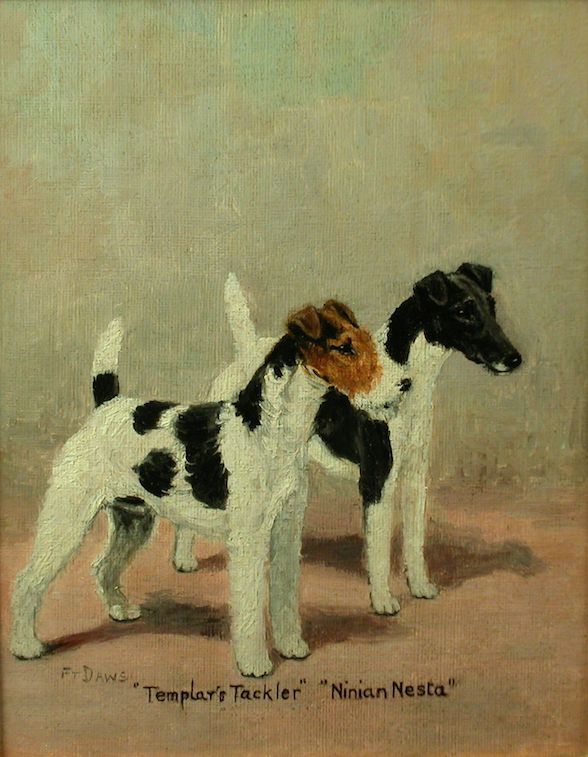
We know from 18th century paintings that dogs resembling Wire Fox Terriers and Smooth Fox Terriers were in existence at the time. Indeed, a Dutch canvas painted by Hamilton, the son of a Scotsman, put a Wire Fox Terrier in the foreground of a flowers and fruit still life. It was dated 1748, but the dog was as recognizable in breed type as any Fox Terrier in the early 1900s. One of the earliest written references that indicates a difference between Wire and Smooth Fox Terrier, however, came in 1840, with the publication of the Encyclopedia of Rural Sports written by Delabere Blaine. Blaine described the two different coats being bred predominantly in the north of England and on Scottish borders.
Before then, the term “fox terrier” was a generic name given to any terrier that bolted foxes out of their dens. This was particularly associated with the fox hunting. Those familiar with the Wire Fox Terrier early on knew it as the Rough Haired Terrier and only later did it become the Wire-Haired Terrier.
The words, “Fox Terrier” were added to the Wire-Haired variety’s name later, the smooth-haired variety being called “Fox Terrier” first. Initially, Smooth and Wire Fox Terriers were considered two varieties of the same breed and for a period of time in the 1800s, Wire Fox Terriers were crossed with the Smooths to get more white in the coat color, a color that became increasingly popular as it could be easily seen and distinguished from the fox or badger. The breedings also introduced cleaner lines for the head, and a more classical figure. That said, they are different breeds with different ancestry. Some believe that Smooth Fox Terriers probably descended from a blend of smooth coated black and tan terriers, Bull Terriers, Greyhounds, and Beagles, while the ancestors of the Wires were probably rough-coated black and tan terriers from Wales, Derbyshire, and Durham.
By the early 1900s, the two breeds were no longer mixed. In 1876, England’s Fox Terrier Club was formed and it divided the two varieties into two registries with two breed standards. Interestingly, the American Fox Terrier Club formed in 1885 became the first specialty club to become a member of the American Kennel Club which had formed the previous year, but it wasn’t until 1985 that the AKC recognized the two as distinctive breeds apart from each other and approved separate standards for them.
Image: Fox Terriers “Templar’s Tackler” and “Ninian Nesta” by Frederick Thomas Daws RA (1878-1949)
